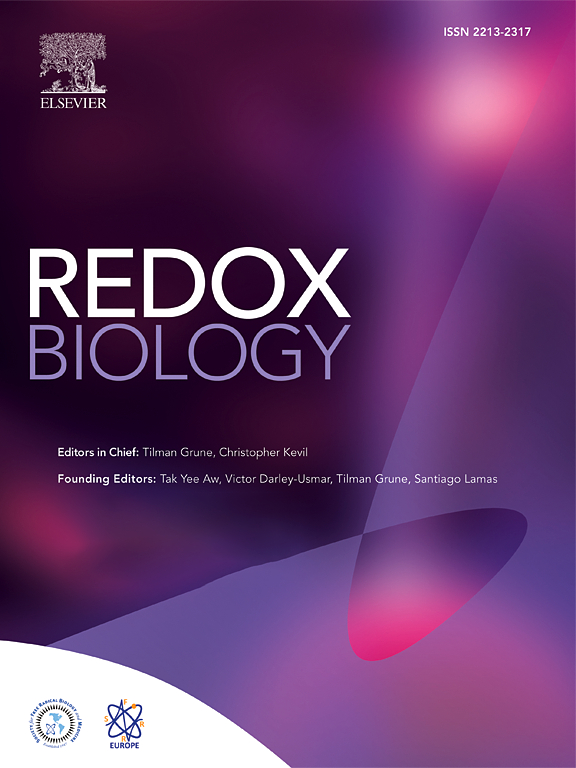The inhibition of TXNRD1 by methylglyoxal impairs the intracellular control of Mycobacterium tuberculosis
IF 11.9
1区 生物学
Q1 BIOCHEMISTRY & MOLECULAR BIOLOGY
引用次数: 0
Abstract
Type 2 diabetes (DM) is a risk factor for development of tuberculosis (TB). Methylglyoxal (MGO), a reactive carbonyl increased during DM targets diverse macromolecules. Here we discovered that MGO converted the mammalian selenoprotein thioredoxin reductase 1 (TXNRD1) to a NADPH oxidase, activating the NRF2 transcription factor in bone marrow macrophages (BMM). NRF2 signaling hampered the production of immune molecules by BMM, thus allowing intracellular growth of M. tuberculosis (Mtb). The overexpression of NRF2 was sufficient to increase the Mtb growth. Several inhibitors of TXNRD1 mimicked the effects of MGO on Mtb growth in BMM. MGO and the TXNRD1 inhibitor auranofin also increased the susceptibility of mice to Mtb infection. Finally, IFN-γ abrogated the MGO-triggered suppression of the protective responses to Mtb in BMM, by epigenetic regulation of immune genes, without impairing NRF2 activation. Thus, metabolic alterations in DM may have a causative role in TB-DM comorbidity, by activating NRF2 responses that impair immune protective responses.

甲基乙二醛对TXNRD1的抑制损害了结核分枝杆菌的细胞内控制
2型糖尿病(DM)是发展为结核病(TB)的危险因素。甲基乙二醛(MGO)是一种反应性羰基,在DM过程中靶向不同的大分子。在这里,我们发现MGO将哺乳动物硒蛋白硫氧还蛋白还原酶1 (TXNRD1)转化为NADPH氧化酶,激活骨髓巨噬细胞(BMM)中的NRF2转录因子。NRF2信号抑制了BMM免疫分子的产生,从而使结核分枝杆菌(Mtb)在细胞内生长。NRF2过表达足以促进结核分枝杆菌的生长。TXNRD1的几种抑制剂模拟了MGO对BMM中Mtb生长的影响。MGO和TXNRD1抑制剂金糠蛋白也增加了小鼠对结核分枝杆菌感染的易感性。最后,IFN-γ通过表观遗传调控免疫基因,在不损害NRF2激活的情况下,消除了mgo触发的BMM对Mtb的保护性反应抑制。因此,DM的代谢改变可能通过激活NRF2反应而损害免疫保护反应,从而导致TB-DM合并症的发生。
本文章由计算机程序翻译,如有差异,请以英文原文为准。
求助全文
约1分钟内获得全文
求助全文
来源期刊

Redox Biology
BIOCHEMISTRY & MOLECULAR BIOLOGY-
CiteScore
19.90
自引率
3.50%
发文量
318
审稿时长
25 days
期刊介绍:
Redox Biology is the official journal of the Society for Redox Biology and Medicine and the Society for Free Radical Research-Europe. It is also affiliated with the International Society for Free Radical Research (SFRRI). This journal serves as a platform for publishing pioneering research, innovative methods, and comprehensive review articles in the field of redox biology, encompassing both health and disease.
Redox Biology welcomes various forms of contributions, including research articles (short or full communications), methods, mini-reviews, and commentaries. Through its diverse range of published content, Redox Biology aims to foster advancements and insights in the understanding of redox biology and its implications.
 求助内容:
求助内容: 应助结果提醒方式:
应助结果提醒方式:


